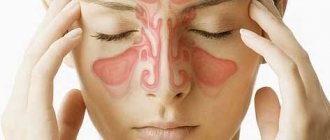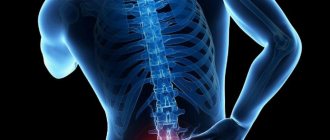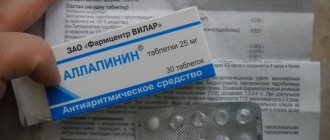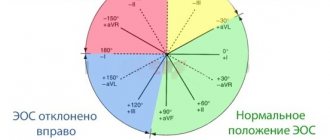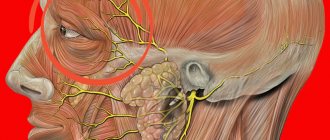Main symptoms:
- Chest pain
- Chest pain
- Lethargy
- Darkening in the eyes
- Sleep disturbance
- Inability to breathe deeply
- Lack of air
- Weakening of the pharyngeal reflex
- Presyncope
- Weakness
- Decreased performance
- Convulsions
- Anxiety
- Fatigue
Cardialgia is a pathological condition characterized by the occurrence of pain in the left side of the chest, which is not associated with angina or heart attack. It is worth noting that this is not an independent nosological unit, but a manifestation of a large number of different conditions of both cardiac and extracardiac origin.
- Etiology
- Varieties
- Psychogenic form
- Vertebrogenic form
Typically, functional cardialgia does not pose a threat to the health and life of the patient, but this does not mean that it should not be treated. In fact, this condition is a consequence of ailments that are already progressing in the human body. First of all, it is necessary to treat them.
It is important to be able to distinguish pain due to cardialgia from pain due to angina pectoris. If the pain in the area of the projection of the heart is of a compressive and pressing nature, it appears more often after strong physical exercise. loads that are not relieved by taking nitroglycerin - this is angina pectoris. This condition requires immediate medical attention.
Etiology
The causes of cardialgia progression are conventionally divided into cardiac and extracardiac.
Heart:
- myocardial hypertrophy;
- endocardial damage;
- myocarditis;
- dishormonal cardiomyopathy;
- pericardial lesions.
Extracardiac:
- diseases of the central nervous system. The progression of cardialgia can be provoked by neurocirculatory dystonia, cervical or thoracic osteochondrosis, herniated intervertebral discs, cervicobrachial syndrome, trauma to intercostal nerve endings;
- gastrointestinal ailments: diaphragmatic hernia, high location of the diaphragm, spasm of the esophagus, stomach and duodenal ulcers;
- pathologies of the musculoskeletal system: Tietze syndrome, rib injury of varying severity;
- ailments of the respiratory system: pleurisy, bronchitis, tracheitis, pleuropneumonia, pulmonary hypertension;
- pathology of mediastinal organs;
- dysfunction of the endocrine system;
- abdominal injuries of varying severity.
Cardialgia description of the symptoms of the disease
As you already understand, any pain in the left side of the chest is considered cardialgia until an accurate diagnosis is made, unless, of course, there are good reasons to suspect a heart attack or stroke. Let's talk about the most common causes and symptoms of pain syndromes.
Quite often, cardialgia is a sign of the development of neurocirculatory dystonia. The disease is characterized by prolonged pain, fatigue, and a feeling of insufficient breathing. Headaches and a constant feeling of anxiety for the most insignificant reasons are also possible. Taking nitroglycerin does not relieve the patient from unpleasant sensations, which is quite natural if it is really cardialgia (the symptoms of the disease are not associated with vasoconstriction, and therefore nitroglycerin will be ineffective).
Pain in the left side of the chest can be caused by osteochondrosis and herniated intervertebral disc. Moreover, the intensity of the sensations does not depend in any way on the amount of physical activity, and intensifies exclusively with certain positions and movements of the hands or head. The most severe pain occurs during sleep, when a person reflexively moves his arms behind his back or spreads them to the sides. Of course, such cardialgia has nothing to do with heart disease, and the cause of its occurrence should be eliminated by an orthopedist.
Cervicobrachial syndrome leads to compression of the subclavian veins and arteries. As a result, a person feels pain in the left side of the body when carrying heavy objects in their hands or when raising their hands up. Patients also experience a decrease in body temperature, swelling of the hands, and a decrease in blood pressure. There is no need to be afraid, because this is again cardialgia, the symptoms of which indicate pathological hypertrophy or the presence of an additional cervical rib.
Often chest pain is caused by intercostal neuralgia, herpes zoster or radicular neuroma. The latter disease leads to the development of such severe pain that even morphine does not help patients. This fact, by the way, is indirect evidence for making the correct diagnosis.
People over 40 years of age very often develop Tietze syndrome or thickening of the costal cartilages. As in all the cases described above, these diseases are accompanied by cardialgia (a description of the symptoms of the disease makes it easy to identify the real source of pain). The discomfort goes away when taking ibuprofen, analgin or brufen.
If you suffer from obesity, then do not be surprised if you suddenly develop cardialgia. People who lead a sedentary lifestyle will definitely encounter it. As a rule, pain occurs immediately after eating and is often confused with angina pectoris. A well-collected medical history will help make an accurate diagnosis.
Aching and stabbing pain in the left side of the chest is a common accompaniment of pulmonary hypertension, pleurisy, myocarditis and pericarditis. Again, they are often confused with cardialgia, since the nature of the underlying disease allows such a conclusion. Only a complete examination of the patient and the experience of the doctor can help here.
Varieties
Psychogenic form
Psychogenic heart pain
Psychogenic cardialgia progresses in a person against the background of depression or severe emotional shock. The patient exhibits the following symptoms:
- burning and pain in the area of the projection of the heart and in the left hypochondrium. The person notes that he either has a feeling of fullness in his chest, or, conversely, emptiness;
- the pain is constant, throbbing;
- the sensitivity of the skin in the area of the left nipple increases;
- with the psychogenic form of the disease, pain can radiate not only to the neck, spinal column or lower back, but also to the genitals.
Pain syndrome is often accompanied by the following unpleasant sensations in certain parts of the body:
- tingling;
- crawling;
- numbness;
- tingling.
Vertebrogenic form
Vertebrogenic cardialgia develops when the cervical spine is affected. Pain syndrome manifests itself when the roots of the nerves that exit this part of the spine are compressed. These nerve fibers have a reflex effect on the heart and coronary blood vessels, as a result of which pressing or aching pain occurs in the area of the projection of the heart muscle.
The following ailments can provoke the development of this form of pathology:
- osteochondrosis. As this disease progresses, the cartilage tissue of the intervertebral discs is replaced by bone tissue. As a result, blood circulation is disrupted and pressure on nerve fibers increases. With osteochondrosis, sympathalgic or radial pain occurs. The main cause of radial pain in osteochondrosis is damage to the roots of the vertebral nerves. In this case, a stabbing, sharp pain occurs, or, conversely, a dull and pulling pain. The manifestation of such a symptom has a specific reason - a person’s prolonged stay in an uncomfortable position or sudden movements. It is noteworthy that the patient can clearly indicate the location of the pain syndrome. Sympathalgic pain in osteochondrosis manifests itself for no apparent reason. Her character is stupid. The pain syndrome is accompanied by the following symptoms: increased sweating, hyperemia, increased blood pressure;
- spondyloarthrosis. It is less likely to cause progression of the disease than osteochondrosis. Due to the development of spondyloarthrosis, hyaline cartilage becomes deformed and becomes inflamed. Inflammation causes the formation of new bone growths, which increases pressure on the spinal nerve roots. Symptoms of cardialgia appear.
Causes of cardialgia of the heart
When making the initial diagnosis of “functional cardialgia,” the question arises, what is it?
This term hides any pain in the heart until a final diagnosis is made. Discomfort can be a consequence not only of heart disease, but also a manifestation of the pathology of another organ.
Causes of cardialgia:
- Diseases of the heart muscle;
- Endocrine diseases;
- Diseases of the gastrointestinal tract;
- Vegetovascular dystonia;
- Alcoholism;
- Hormonal changes during menopause in women;
- Neuralgic diseases and problems with the spine;
- Pulmonary diseases.
Before a full examination, based on the description of the symptoms of cardialgia, the causes can be approximately determined. This is often possible with neurological diseases.
Neurocirculatory dystonia (NCD) develops against the background of an imbalance in the functioning of different parts of the central nervous system. Pain in the chest appears simultaneously with respiratory distress, excessive sweating, and dizziness. The patient becomes panicky, afraid of everything, and quickly gets tired.
In young people, pain can occur as a consequence of overload, physical or mental. When taking nitroglycerin, the pain does not go away.
With cervicobrachial syndrome, compression of the arteries and veins of the subclavian vessels and the brachial nerve plexus occurs. Occurs when there is excessive load on the shoulder system, prolonged transfer of weight, or working with arms extended upward.
Various manifestations of neuroses associated with changes in the functions of the cerebral cortex provoke pain in the heart area and fear of death. It is possible to develop a psychogenic form of the disease or cardioneurosis due to nervous breakdowns and problems with adaptation.
Osteochondrosis, intercostal neuralgia, rib damage and other problems with neuralgic diseases.
Rapid growth in children or pathologies of nervous regulation in adolescence can also lead to manifestations of cardialgia.
In many of the mentioned conditions, obvious organic pathologies of the heart and coronary vessels are not observed. In these cases, pain in the cardiac region is not dangerous.
Symptoms
As the disease progresses, the following symptoms appear:
- pain syndrome localized in the left half of the chest, behind the sternum. In rare cases, pain also occurs in the armpit area. It is noteworthy that pain directly depends on the position of the person’s body. For example, it can intensify if a person bends forward or raises his left arm up;
- sleep disturbance;
- sense of anxiety;
- violation of the swallowing reflex;
- darkening of the eyes;
- the patient cannot fully take a breath, so he has a feeling of lack of air;
- in severe cases, pre-fainting or convulsions may develop;
- if the symptoms of the disease appear in a state of complete rest, this may indicate the progression of neurocircular dystonia. In this case, the following symptoms join the main clinical picture: constant fatigue, weakness, lethargy, decreased performance.
Symptoms of cardialgia
Painful sensations in the heart area depend on the position of the body, for example, they intensify from bending forward, if you raise your left arm up, from taking a deep breath, when carrying heavy objects, when driving a car.
The nature of the pain may be stabbing, cutting, aching. Patients with cardialgia experience mortal fear, feel a lack of air, begin to panic, the heartbeat increases, sweating appears, the vision becomes dark, and a headache begins.
Patients note a decrease in body temperature, swelling of the hands, and low blood pressure. Swallowing may be difficult (Barré-Lieu syndrome), which is more common in older people with short necks. When the subclavian artery is compressed (Naffziger syndrome) and in the presence of an additional cervical rib (Falconer-Weddell syndrome), patients complain of shoulder pain radiating to the palm, low blood pressure, chilliness, and weak pulse.
If this is psychogenic cardialgia, then pain is more often observed in the apex of the heart, and the pain can move. Cardialgia of a vegetative crisis is characterized by very long-term pain of a pressing or aching nature; Validol and Nitroglycerin in this case do not alleviate the condition. At the same time, blood pressure increases, so cardialgia of a vegetative crisis can be confused with a hypertensive crisis. Patients note lethargy, weakness, a feeling of fear, tremors appear in the body, shortness of breath may begin, a feeling of lack of air appears, and the heartbeat quickens.
Sympathalgic cardialgia is characterized by severe burning pain in the heart and behind the sternum. In this case, patients complain of severe skin soreness. With cardialgia associated with diseases of the gastrointestinal tract, in addition to pain in the heart, the patient is worried about nausea or vomiting, a feeling of heaviness on the left side under the ribs, a swollen stomach, heartburn, a sour taste in the mouth, and belching.
With cardialgia associated with pneumonia and pleurisy, high body temperature, weakness, poor health, pallor, shortness of breath, cough (initially dry, then wet) are noted, and chest stiffness appears on one side.
If the causes of cardialgia are diseases of the spine, then the patient is bothered by back pain and interscapular pain. With osteochondrosis, the pain in the heart takes on a cutting, stabbing, shooting character, the pain radiates to the arm, numbness appears, the sensitivity of the limbs decreases, and tingling appears. With intercostal neuralgia, the pain is short-term, stabbing.
With dishormonal cardialgia, there is a feeling of heaviness, tightness in the chest, cutting, burning, piercing pain, which can be long-term or short-lived, often at night. Often, patients do not have enough air; this is not true shortness of breath, but a feeling of lack of air. There may be loss of consciousness, fainting, pain is accompanied by characteristic “hot flashes”, increased sweating, tingling sensation, headaches, palpitations, a feeling of cardiac arrest, spasms in the throat, dizziness. The mood of patients is reduced, irritability and emotional lability are characteristic.
Diagnostics
If pain occurs in the area of the projection of the heart, it is important to immediately visit a medical facility for a full diagnosis of this condition, because such a symptom may indicate both cardialgia and the presence of pathologies of the cardiovascular system. Only a qualified specialist will be able to conduct a competent differential diagnosis and prescribe adequate treatment.
The standard diagnostic plan for cardialgia includes the following examinations:
- echocardiography;
- X-ray;
- EGDS of the stomach;
- ECG;
- Ultrasound;
- MRI of the heart;
- CT scan of the heart.
Features for various pathologies
The presence of symptoms during cardialgia that manifest themselves at rest often indicates the presence of neurocirculatory dystonia in the patient. At the same time, in addition to the pain in the chest, there is a feeling of constant fatigue and the inability to fully inhale. In addition, the pain in the heart is quite long-lasting.
In cases where cardialgia is associated with disorders in the cervical-brachial area, painful sensations occur in the left arm and the corresponding half of the chest. In this case, pain appears when trying to lift a weight or simply raise your arms up.
If a patient has herpes zoster or intercostal neuralgia, the pain is acute, lasts a long time and is not relieved by taking even strong analgesics.
Cardialgia, the symptoms of which are described above, may be a manifestation of Tietze syndrome, characteristic of patients over forty-five years of age. This disease is characterized by thickening of the costal cartilages. However, the pain is easily relieved with the help of non-steroidal anti-inflammatory drugs.
A variety of infectious pathologies, ailments of the digestive organs, and menopausal hormonal imbalances also often lead to pain in the heart.
The consequences of cardialgia depend on the pathology that caused it. For example, untreated myocarditis can lead to cardiosclerosis, thrombosis, heart failure, and osteochondrosis can lead to motor (walking, bending, and so on) disorders, including disability.


